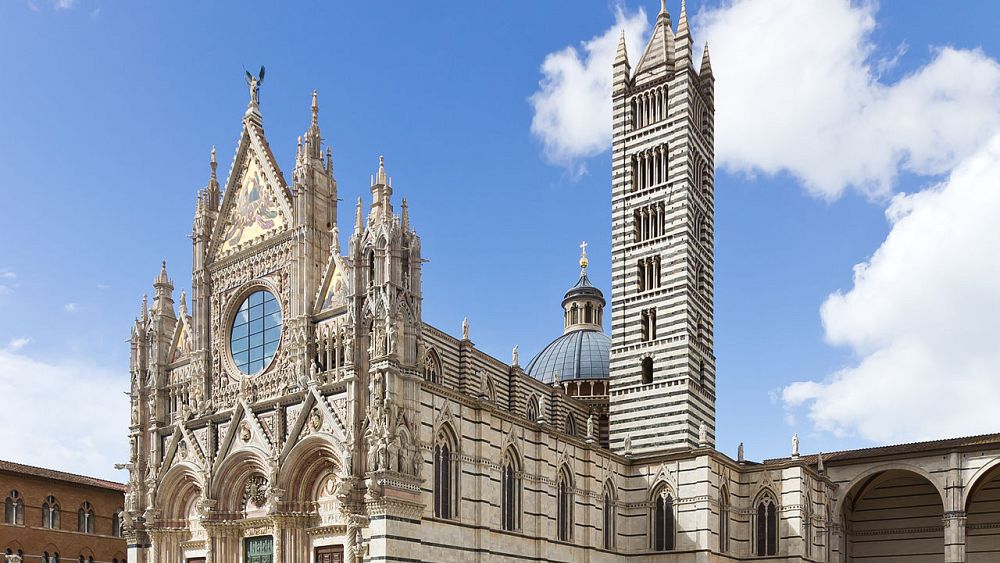
The vast marble floor is uncovered twice a year for a few weeks.
For the next two weeks, however, visitors to the religious site will be able to get a rare view of the 56-panel marble floor in all its glory.
The Duomo di Siena was constructed in the first half of the 13th century and is one of the city’s most visited attractions.
The interior is a cornucopia of artistic marvels, including works by Italian masters like Donatello, Michelangelo and Bernini.
While these are on display year-round to visitors, the 1,300 square-metre marble floor is only uncovered for two short periods each year.
These coincide with Siena’s centuries-old Palio horse race, which takes place twice a year. Following the much-awaited event, which sees the contrade or neighbourhoods of the city pitted against each other, the cathedral floor is briefly unveiled.
The vast pavement is an artistic feat of classical and biblical scenes and symbolism. Most of it was laid out in stages between 1370 and 1550, but the work was only finally completed in the 19th century.
Several Sienese artists drew out the preparatory studies for the floor’s 56 square panels. At first, the designs were reproduced in marble by chiselling the outlines into white marble and then filling them in with black stucco in a technique known as ‘graffito’.
Later, craftsmen switched to a mosaic inlay technique known as marquetry involving slotting marble pieces together.
In his scenes from the Lives of Elijah and Ahab, Mannerist artist Domenico Beccafumi mastered the marble inlay technique so expertly that he managed to achieve a chiaroscuro effect with it.
Giorgio Vasari, a 16th-century artist and author of The Lives of the Most Excellent Painters, Sculptors, and Architects, considered it the “most beautiful, largest and most magnificent floor ever made.”
The floor is currently on view until 31 July. It will then be recovered for a few weeks and be unveiled again from 18 August to 18 October.
To see the mosaics, you need to purchase a ticket to the cathedral. This costs €8 full price while admission is free for children up to 6 years old, disabled visitors and residents of Siena.











